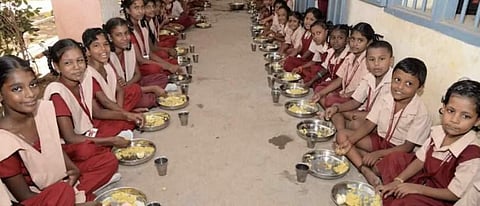

The provision of midday meals in Indian schools has been a contentious issue for decades, with strong arguments both for and against its continuation. Proponents of the scheme highlight its role in alleviating hunger and malnutrition among children, particularly from disadvantaged backgrounds, while opponents raise concerns about its sustainability, nutritional quality, and impact on local economies.
Nutritional benefits and poverty alleviation
Midday meals serve as a crucial source of nutrition for millions of Indian children, many of whom come from families with limited means to provide adequate food at home. These meals often provide the only nutritious intake that these children receive, reducing the risk of stunting, malnutrition, and other health problems.
The provision of a free meal attracts children to school, increasing enrollment rates and reducing the burden on families' meagre resources. This, in turn, can lead to improved educational outcomes and increased opportunities for social mobility.
Sustainability and nutritional quality concerns
Despite its positive impacts, the midday meal scheme faces challenges in terms of sustainability and nutritional quality. The sheer scale of the programme, catering to millions of children across India, places a significant strain on government resources. There have been instances of corruption and mismanagement, leading to concerns about the efficient utilisation of funds and the quality of the meals provided.
In addition, the nutritional content of midday meals has been criticised for being high in carbohydrates and lacking in essential micronutrients. While providing basic calories is essential for combating hunger, ensuring a balanced and nutritious diet is crucial for children's overall health and development.
Impact on local economies
The midday meal scheme has also had a mixed impact on local economies. On the one hand, it has created employment opportunities for cooks, helpers, and suppliers of food grains and other ingredients. However, there have also been concerns that the reliance on centralised procurement systems has stifled the growth of local markets and marginalised small-scale farmers and food producers.
Balancing the pros and cons
The debate surrounding midday meals in Indian schools highlights the complex interplay between nutrition, poverty alleviation, and economic development. While the scheme has undoubtedly played a positive role in reducing hunger and improving educational outcomes, there is a need for continuous improvement in its implementation to ensure sustainability, nutritional quality, and a positive impact on local economies.
Finding the right balance between these competing interests requires a multi-pronged approach that addresses issues of funding, procurement, monitoring, and menu planning. By ensuring that midday meals are not only nutritious but also economically sustainable and supportive of local communities, India can continue to reap the benefits of this program while mitigating its challenges.
